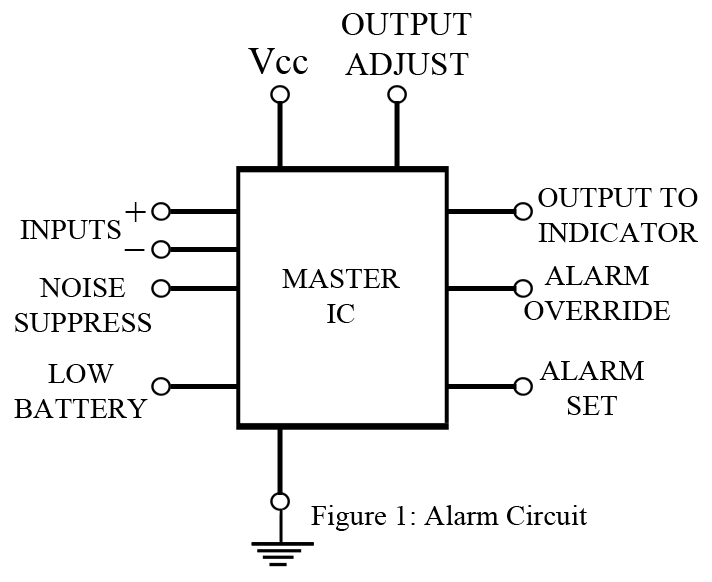Alarm has today been established as a medium to alert people about the unusual happenings around the territory it is fixed at. This is a common circuit which makes uses of low power components and easily available electronic machinery to serve our purpose. To add more, because of the simplicity of this project, it can be implemented at places we sense the necessity.
This IC benefits an individual with the possible list of options to select how s/he wants the alarm circuit to function, which includes necessary set-up for burglar alarms, temperature and moisture monitoring features. Along with the input-noise suppression signal, both positive and negative input signals are lodged together. The working of this IC circuit solely depends on its low battery voltage sensing capability.
Switches are used to deliver inputs either to set the alarm, or to override alarm. In most of the cases, these switches are key-operated. As we stated earlier, this circuit makes use of low power components, it operates on a battery supply. Thus generated output current can be used to drive either a horn, a speaker, or some other audible or visual indication. The level of battery voltage determines different states of the alarm which are briefed in points below:
- The maximum current required; Standby power-supply current, for the circuit to operate when there is no alarm condition ranges from 5 to 7 µ
- The maximum current required; Operating power-supply current, when the IC is in the alarm condition varies from 5 to 15mA.
- The level of either positive or negative input voltage which will initiate the alarm, also called Input voltage threshold, ranges from 3.0 to 3.4 V.
- The voltage at which the low battery alarm will start to indicate the alarm condition is called Low battery threshold detector level, whose value varies from 1.7 to 2.0 V.
- Maximum current at the output is adjustable in this type of IC such that the circuit can be properly interfaced with external logic or indicator devices. However, the value must not exceed 15mA.
Check out our various alarm circuit posted in bestengineeringprojects.com
- Alarm Circuit for Clocks
- Door Ajar Alarm Circuit
- Alarm Circuit | Door Bell Circuit
- Automatic Fence Lighting with Alarm
Applications of Alarm Circuit
This circuit offers multiple features and ensures low cost implementation. Hence it can be used in different fields concerning minimal security services, where physical parameters like temperature, airflow, pressure, illumination, etc., are continuously monitored. The slight changes in any of these parameters under consideration will trigger the alarm. It is most suited for battery-type applications where low power supply is sufficient to operate the project.
